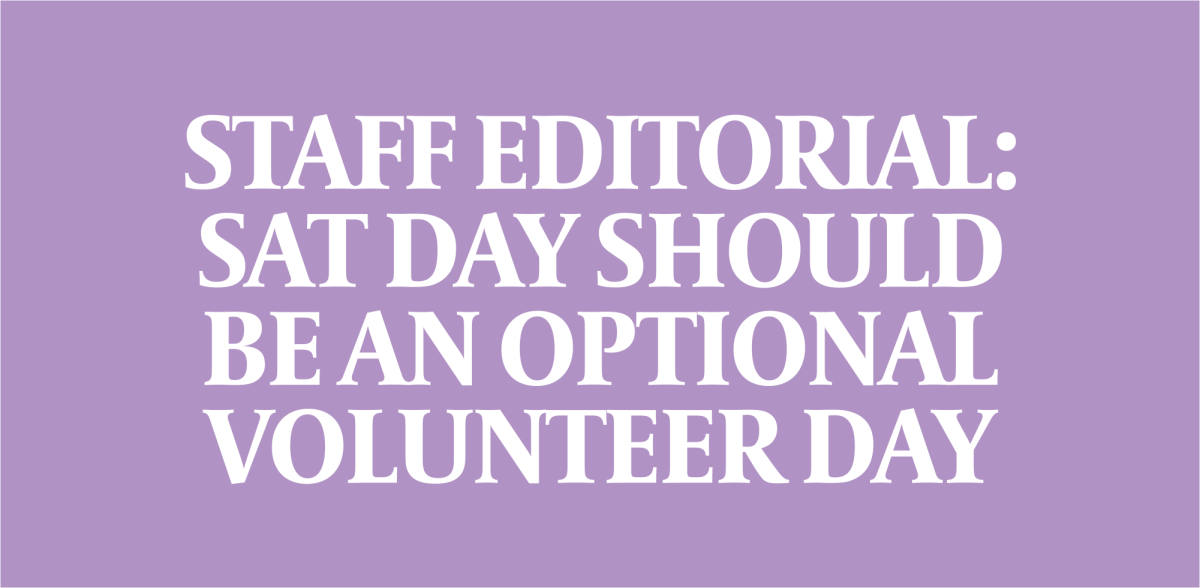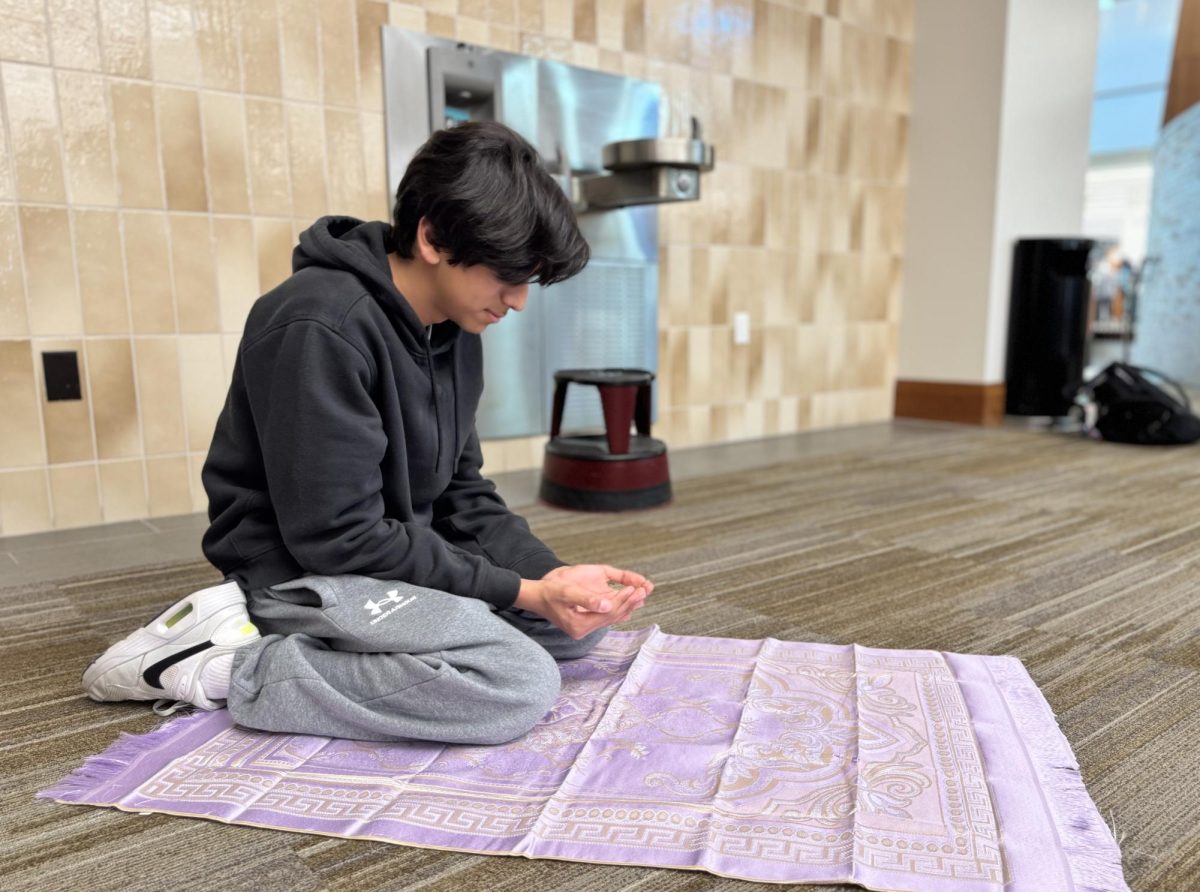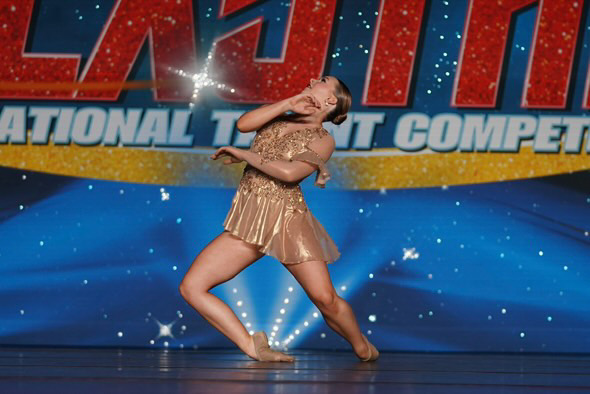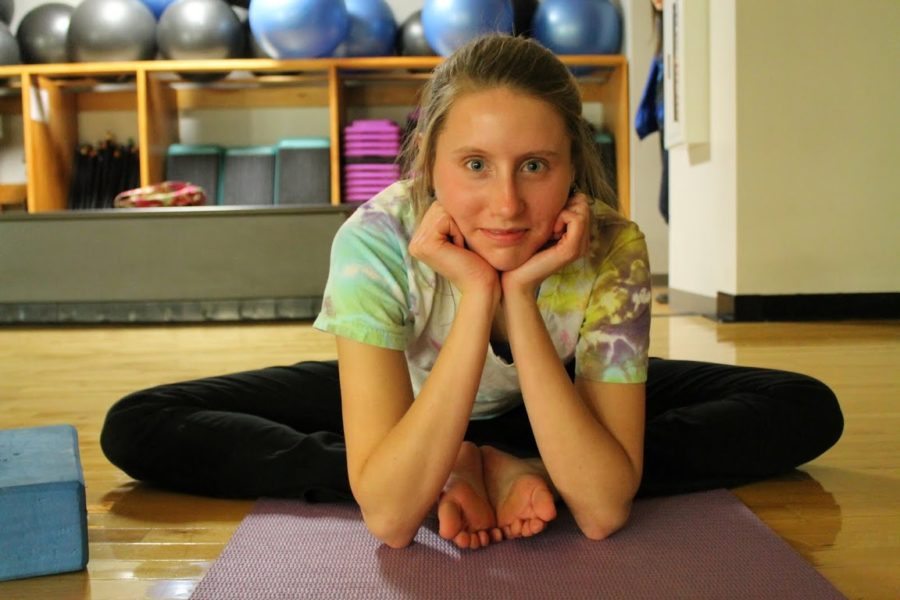Senior Rachel Peterson is flushed when she takes the mat. She stands on one slender leg and leans forward gracefully with arms extended until she bears a faint resemblance to the warrior after which the pose is named. Her eyes remain focused straight ahead and her expression displays her intense concentration.
A Jan. 8, 2012 article by The New York Times titled “How Yoga Can Wreck Your Body” revealed the shocking risks of yoga to those who practice it. However, a number of yogis, including Peterson, claim that the supposed hazards are not significant unless practitioners fail to pay attention to their limits.
“For the most part, (yoga) is very beneficial to your health because it combines flexibility with strength, so you’re exercising your muscles in a safe way,” Peterson said. “The only danger I could see is if you push your body too far.”

Vickie Kloskey, yoga instructor at the Monon Center, said while the practice can be dangerous, its risks are no greater than those that accompany any other form of exercise.
“Any physical activity has a risk to it. You’re moving your body. You can move it the wrong way picking up your vacuum cleaner at home, and you can pull your back,” Kloskey said.
The article, which served as a warning from yoga teacher Glenn Black about the harmful effects yoga can have, has faced opposition from people who believe it fails to tell the whole story about injuries sustained by yogis.
“I think the article was good in the fact that people need to realize that when you walk into any type of fitness class, no matter whether it is yoga, Pilates, steps (or) Zumba, you are moving your body physically, and there are times when your body unfortunately is going to get injured because you want to go right and your knees decide that ‘I’m still going left,’” Kloskey said. “I thought the article really didn’t do a great job of pointing out that a person walking into class (needs to take) the responsibility of listening to your body and going, ‘Hey, that doesn’t feel right. I probably shouldn’t do it,’ instead of being the Type A American of ‘Oh, no pain, no gain. I should just keep going.’”
Assessing the risks that accompany yoga is becoming increasingly necessary as it becomes more prominent in the United States due to its popularity among the nation’s wealthy and famous and also its philosophical appeal.
“I think a lot of the allure of the yoga is the calmness and the steadiness that it can bring people. Everyone lives a very high-stress life now, kids on up,” Kloskey said. “I think a lot of people are looking more actually for the stress reduction that yoga can bring. There are exercises where you need to be conscious of your breath and your movement, whereas if you’re doing a cardio class, they’re not really doing that.”
She said she is particularly attracted to the philosophical aspect of yoga, which emphasizes nonviolence, satisfaction and refraining from hoarding material possessions.
“Once you can connect into your breath and your mind and your body, it can be very calming,” Kloskey said. “It’s been shown over and over that especially working on your breath can lower your blood pressure (and) your stress level, because it is a calming factor on your body.”
This philosophy, she said, also helps her attain a peace of mind that escapes many people as a result of their discontentment.
“There are a lot of things in life that bring us unhappiness because we actually bring it upon ourselves because we feel like we need to have that better car or the next generation iPhone, and if we don’t have it, we’re unhappy because we’re not on the cutting edge,” she said.
On the other hand, Peterson said she attributes yoga’s boom in popularity in the United States to its prevalence among famous Americans.

“For a while, it was kind of a trendy thing, because I know celebrities had kind of advertised it and made it more publicized, and I think having that publicity has made it more popular,” she said. “You hear about it more often, but it’s a very, very old form of exercise.”
According to Peterson, the appeal in yoga lies in its relaxing powers for her.
“The reason that I’ve really been sticking with it this time around is because I’ve gotten really into meditation,” she said. “I really like the Middle Eastern aspect of yoga, and I love the meditation at the end. I’m not really one for working out, but I like that it is a relaxing workout but at the same time, you work on strength, balance and focusing your mind as well.”
According to Kloskey and Peterson, recognizing one’s limits is an important aspect of yoga and is instrumental in preventing injuries.
“In yoga, they always warn you, ‘You can modify the pose if you need (to) make it easier or harder,’” Peterson said. “If you were to overstretch your body or do something that didn’t feel right, then you could end up with a pulled muscle or something of that sort.”
Kloskey said she advises students not to attempt anything that could potentially harm them.
“I am not a physical therapist. I am not a doctor. I can’t diagnose something for you. In the end, I can’t make the decision for you to say, ‘Yeah, that’s okay for you to do that.’ I would always err on the side of caution and say, ‘If you’re not sure, don’t do that,’” she said.
According to Peterson, yoga relaxes practitioners and allows them to work on strength, balance and focus as long as people take necessary precautions.
“My body is naturally pretty flexible, so it’s fairly easy for me just to get right into it,” she said. “When I first started, I didn’t go out and do the hardest poses. You just have to know your limits, and if you do, that’s fine.”































![AI in films like "The Brutalist" is convenient, but shouldn’t take priority [opinion]](https://hilite.org/wp-content/uploads/2025/02/catherine-cover-1200x471.jpg)













































![Review: “The Immortal Soul Salvage Yard:” A criminally underrated poetry collection [MUSE]](https://hilite.org/wp-content/uploads/2025/03/71cju6TvqmL._AC_UF10001000_QL80_.jpg)
![Review: "Dog Man" is Unapologetically Chaotic [MUSE]](https://hilite.org/wp-content/uploads/2025/03/dogman-1200x700.jpg)
![Review: "Ne Zha 2": The WeChat family reunion I didn’t know I needed [MUSE]](https://hilite.org/wp-content/uploads/2025/03/unnamed-4.png)
![Review in Print: Maripaz Villar brings a delightfully unique style to the world of WEBTOON [MUSE]](https://hilite.org/wp-content/uploads/2023/12/maripazcover-1200x960.jpg)
![Review: “The Sword of Kaigen” is a masterpiece [MUSE]](https://hilite.org/wp-content/uploads/2023/11/Screenshot-2023-11-26-201051.png)
![Review: Gateron Oil Kings, great linear switches, okay price [MUSE]](https://hilite.org/wp-content/uploads/2023/11/Screenshot-2023-11-26-200553.png)
![Review: “A Haunting in Venice” is a significant improvement from other Agatha Christie adaptations [MUSE]](https://hilite.org/wp-content/uploads/2023/11/e7ee2938a6d422669771bce6d8088521.jpg)
![Review: A Thanksgiving story from elementary school, still just as interesting [MUSE]](https://hilite.org/wp-content/uploads/2023/11/Screenshot-2023-11-26-195514-987x1200.png)
![Review: "When I Fly Towards You", cute, uplifting youth drama [MUSE]](https://hilite.org/wp-content/uploads/2023/09/When-I-Fly-Towards-You-Chinese-drama.png)
![Postcards from Muse: Hawaii Travel Diary [MUSE]](https://hilite.org/wp-content/uploads/2023/09/My-project-1-1200x1200.jpg)
![Review: "Ladybug & Cat Noir: The Movie," departure from original show [MUSE]](https://hilite.org/wp-content/uploads/2023/09/Ladybug__Cat_Noir_-_The_Movie_poster.jpg)
![Review in Print: "Hidden Love" is the cute, uplifting drama everyone needs [MUSE]](https://hilite.org/wp-content/uploads/2023/09/hiddenlovecover-e1693597208225-1030x1200.png)
![Review in Print: "Heartstopper" is the heartwarming queer romance we all need [MUSE]](https://hilite.org/wp-content/uploads/2023/08/museheartstoppercover-1200x654.png)


